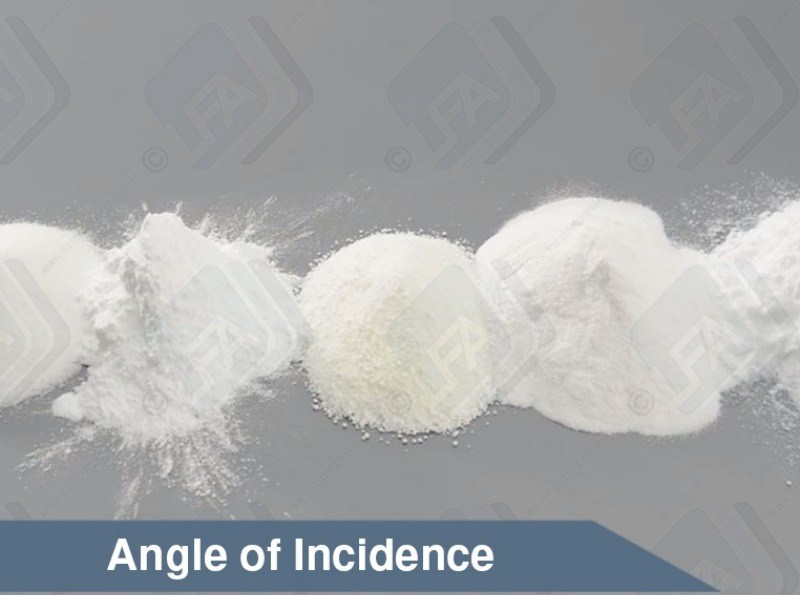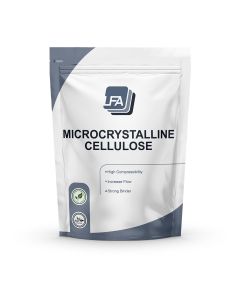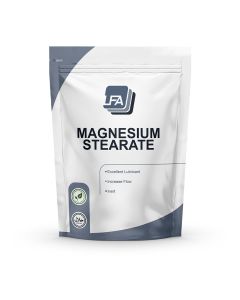Laktose Pulver
Laktose Pulver ist ein Produkt auf das Verbraucher vertrauen. Es hat eine Vielzahl von Anwendungen. Es verbessert den Geschmack, die Textur und die Farbe Ihrer Tabletten und ist in generell unreaktiv.
Laktose Pulver in Pharmaqualität wird oft in Tabletten verwendet und hat ein niedrige Niveaus der Verunreinigung. Es ist ein Kohlenhydrat, das heißt, es ist ein Disaccharid. Dies bedeutet, dass es zu der Klasse der Zucker gehört, welche zwei Monosaccharid Rückstände enthalten. Es macht ca. 2-8% des Gewichts der Milch aus. Es ist ein lösliches Produkt mit einem niedrigen Niveau von Süße. Laktose Pulver ist klar und farblos und inert. Es kann Sicherheitselemente eines Produktes verbessern und macht den Herstellungsprozess glatter.
Was ist Laktose Pulver
Laktose ist ein einfaches Kohlenhydrat das in Milch gefunden wird. Ein anderer Name dafür ist Milchzucker. Es ist ein reduzierender Zucker, was bedeutet, dass es bei hohen Temperaturen mit Aminosäuren reagiert. Dies kann den endgültigen Geschmack bestimmen. Wenn Laktose Pulver in einer Tablette verwendet wird, dann durch die direkte Kompressionsmethode. Sprühgetrocknete und wasserfrei Laktose sind beide in der Lage, unter Kompression eine feste Tablette zu bilden. Pharmaqualitative Laktose ist ein feines Pulver, aber es funktioniert in Verbindung mit anderen Arten von Laktose Pulvern. Eine kleinere Maschenweite macht das Mischen einfacher und effizienter und gröbere Sorten verbessern den fluss. Laktose Pulver kann auch mit Saccharose gemischt werden um Zuckerbeschichtungen zu erstellen.
Die Erstellung von verschiedenen Qualitäten von Laktose Pulver hat große Fortschritte gemacht. Jede Qualität produziert eine einzigartige Form von Laktose Pulver. Dies bedeutet, dass Sie genauer die Eigenschaften der Formel bestimmen können. Jede dieser verschiedenen Sorten hat ihre eigene Methoden der Herstellung. Pharmaqualitative Laktose wird mit einer Konzentration von Molke hergestellt um die Laktose zu übersättigen.
Die Endverbraucher Meinung sollten bei der Erstellung einer Tablette berücksichtigt werden. Laktose Pulver ist eine bekannte Zutat mit vielen Einsatzmöglichkeiten und ist dem Verbraucher vertraut. Ein Problem das man kennen sollte ist ein Verbraucher mit Laktose-Intoleranz. Die Einnahme dieser Zutat kann bei ihm zu Krämpfen, Durchfall und Blähungen führen.
Pharmaqualitatives Laktose Pulver muss an einem kühlen, dunklen Ort gelagert werden. Die Temperatur sollte unter 27Grad Celsius und die Luftfeuchtigkeit unter 65% liegen, da zu hohe Luftfeuchtigkeit zu Schimmelbildung führen kann.
Laktose-Pulver ist:
Laktose Pulver ist eine weithin akzeptierte Zutat, die auf der ganzen Welt als sicher gilt. Es verbessert die Qualität und den Geschmack Ihres Produktes. und Sie finden eine Zutat, die perfekt in eine Vielzahl von Anwendungen passt.
| Name | Wert |
|---|---|
| CAS Nummer | 63-42-3 |
| Molekulare Forlmel | C12H22O11 |
| Aussehen | Weißes Pulver |
| Physikalischer Zustand | Fest |
| Lagerung | Lagerung bei Raumtemperatur |
| Siedepunkt | 668,9 Grad C |
| Dichte | 1,525 g/cm³ |
| Molekulargewicht | 342,30 g/mol |
| Net Weight (kg) | 1.06 |
Yes, it does not matter what age, size or sex the person consuming the products is. It is, however, important to check the intolerance data.
Yes, all of the excipients are safe for human or animal consumption. There are some precautions that should be taken when handling them and there are some people that might have intolerances to some of them. Information on this can be found in the products MSDS and Intolerance Data Sheet. This can be found in this section for every excipient.
Yes, there are all of them can be found in the intolerance sheets for each product. The intolerance sheets can be found here: https://www.lfatabletpresses.com/product-data
FFFFFF Yes, we have bulk pricing for all of our excipients, and these can be found in this section. We offer bulk in 500 kg, 1 ton, 2 ton and 5 ton lots. The prices are set on these quantities as these are the amounts that will fit on pallets.
Yes. CoA stands for Certificate of Analysis this is also known some times as an MSDS (Material Safety Data Sheet) all of the information contained in a CoA is inside the MSDS for every LFA product which is emailed to you after purchase.
Yes. There are two things at play here. You can get hygroscopic and hydrophobic excipients. Hygroscopic means that they take on water quickly, while hydrophobic means that they repel water.
There are products know as supper disintegrants. These products help the breakdown of tablets. At the moment LFA does not sell any supper disintegrants.
Magnesium stearate is hydrophobic this means that it will slow the breakdown of a tablet.
However, it is used in such small amounts that most of the time it will not make a difference to our customer's products. If they would like to be sure then they should conduct what is known as a disintegration test.
Firmapress - 2 years form batch date.
Dextrose - 3 years from batch date.
Dicalcium Phosphate - 3 years from batch date.
Microcrystalline Cellulose -
Magnesium stearate -
Lactose - 2 years from batch date.
Silica Dioxide - 2 years from batch date.
here are 6 steps that should be followed as a general rule of thumb when cleaning contact surfaces that have come into contact with powders:
Dry Clean - First you need to remove as much of the dry powder as possible. You can do this using a hover/vacuum. Make sure that the vacuum you are using has a filter good enough to handle fine dust.
Wet Clean - Next you need to perform a wet clean. This can be done with warm water and soap or if available an ultrasonic cleaner.
Rinse - Next you need to rinse off any soap with potable water (drinking water). You do not have to do this if you used an ultrasonic cleaner in the last step. It is important to ensure that all parts are thoroughly dried immediately after washing to avoid any rusting.
Sanitise - Next you need to sanitise the surface. This step is recommended by the FDA. There are a number of sanitising solutions available designed to be applied and left on.
Lubricate - You now need to lubricate any parts that require it. This should be with the appropriate grade oil or grease considering your use and greasing chart. Store - Finally store any of the parts in a cool dry place. If you are storing them on the machine then make sure the machine is in a temperature controlled environment with low humidity.
Dextrose - approx 100 mesh
Dicalcium Phosphate - approx 100 mesh
Microcrystoline Cellulose - approx 120-200
Magnesium sterate -
Lactose - 80 mesh
Silica Dioxide -
Firmapress - 100-200 mesh
Dextrose - Sweetener, binding agent, good for chewable tablets or candy.
Microcrystalline Cellulose - Binder, filling agent. Good at binding tablets and making them bigger. It can also be used as a filler for capsules.
Magnesium stearate - Dry Lubricant. This stops products from getting stuck to the tooling. It can also help with powder flow issues and caking issues.
Lactose - Binder, sweetener and bulking agent. It has a large mesh so it flows well but most people do not like it because of the intolerance issues.
Silica Dioxide - Flowing agent. This assist powders in flowing smoothly through the machines. It also helps with cacking issues where powders get stuck to the machine.
Firmapress - 2 years form batch date.
Dextrose - 3 years from batch date.
Dicalcium Phosphate - 3 years from batch date.
Microcrystalline Cellulose -
Magnesium stearate -
Lactose - 2 years from batch date.
Silica Dioxide - 2 years from batch date.
If your product does not bind well then we would recommend using MCC. This can be used in any % the limiting factor is the size of the tablet.
If the amount of MCC you would have to use would be too much or if you do not want to use MCC then you have 3 other options: Ask your supplier for a directly compressible or tabletable grade of your product. Spray dry your product. Wet granulate your product.
If your product is sticky then you will need to add a dry lubricant to your mix. For this, we recommend magnesium stearate.
We do not recommend that you add more than 1% to the mix as more than this can cause capping. If your product is still sticky at this point then we would recommend looking into granulation.
If your product or API is clumpy then you will need to add an anticaking agent. For this, we recommend silicon dioxide. We only recommend adding a maximum of 2% of this to the mix










